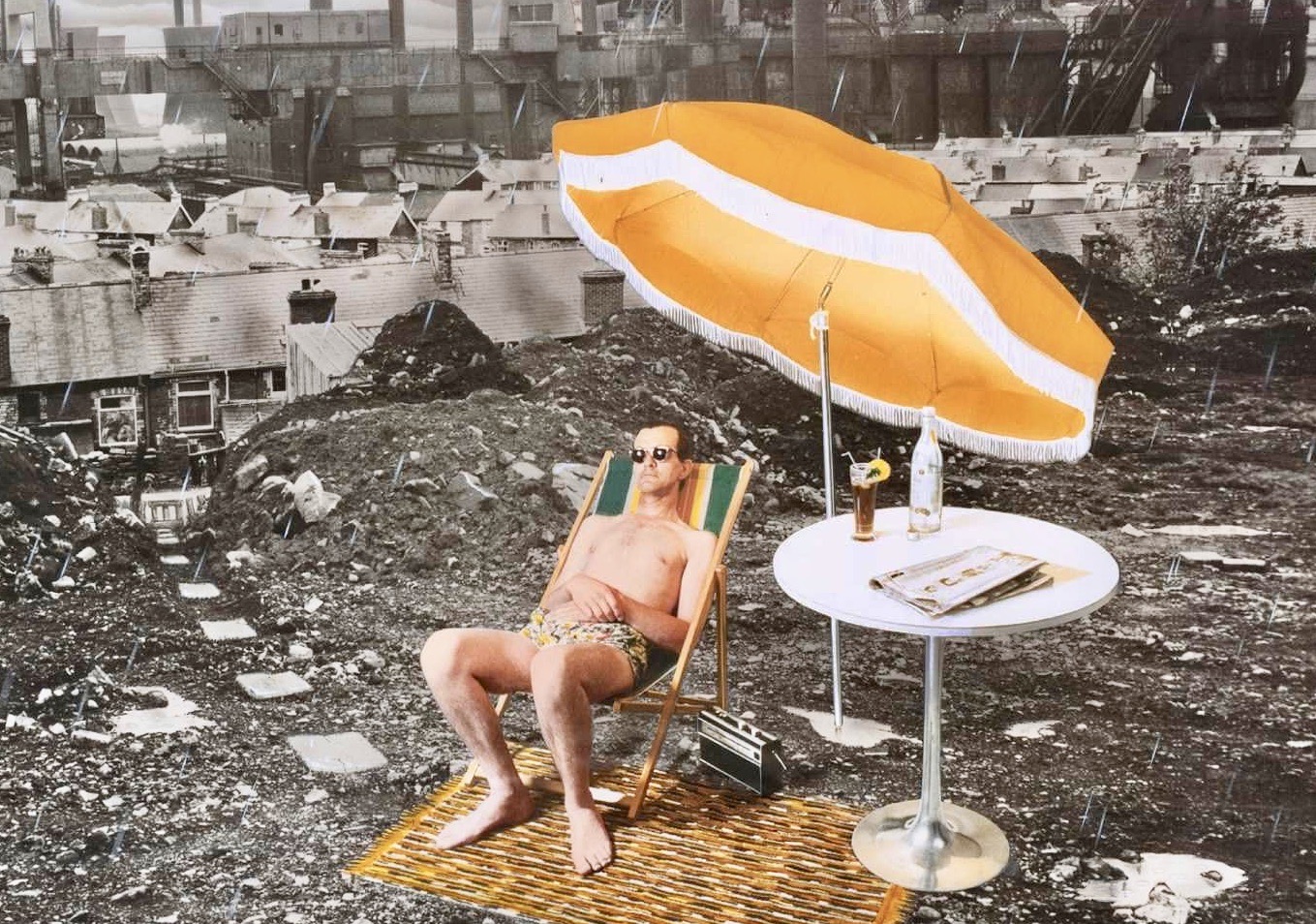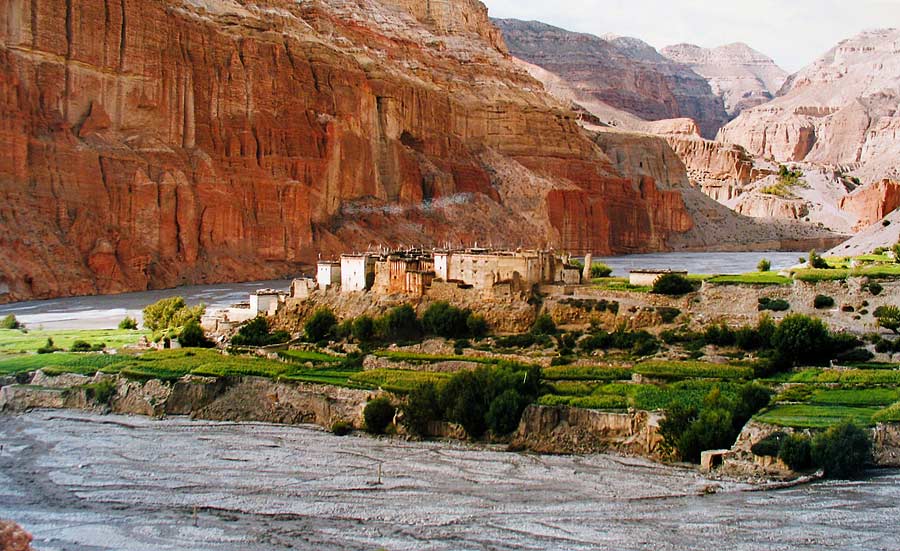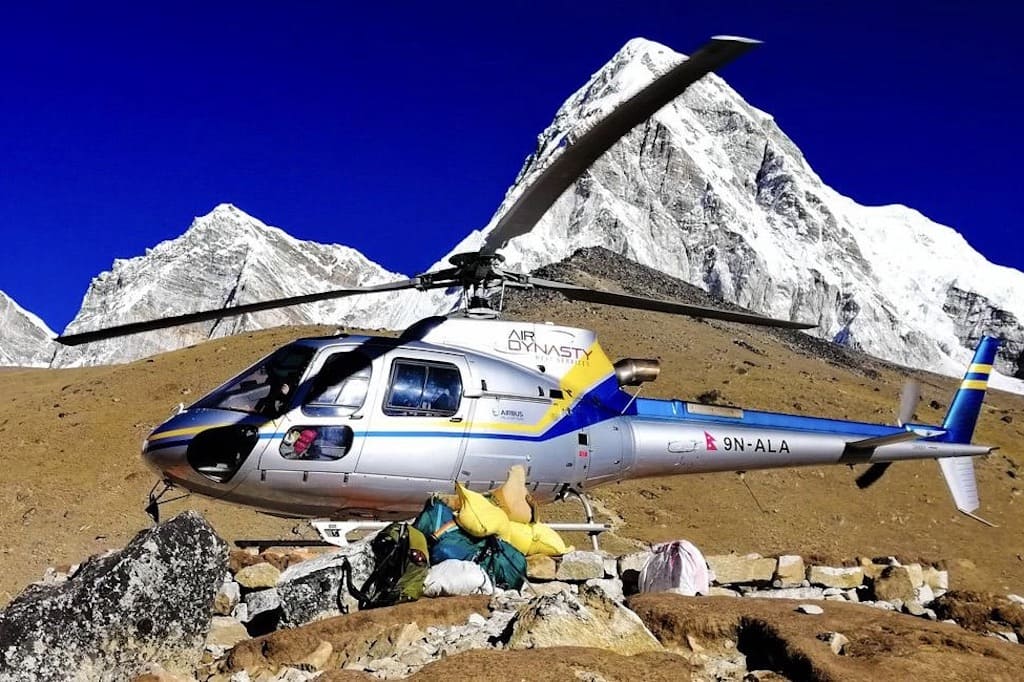You can contact us by e-mail or phone
from uk
01405 862917
outside uk
+44 1405 862917
01405 862917
+44 1405 862917

Trek Porters
Snow Cat Travel - A UK registered trade mark
Undoubtedly the unsung heroes of Himalayan trekking, porters are very much the backbone of any trek and their pivotal role and contribution to both the success of your own trek should never be under estimated.
The value of porters on your trek is far more than just carrying your main baggage from lodge to lodge.
Their cheerful and happy nature with smiles wider than the Cheshire cat’s and “good morning” is always a welcome start to each trekking day.
Contrary to popular belief the use of the term "Sherpa" to describe the role of a porter is incorrect. A Sherpa is in fact a male person from an ethnic group of people whom inhabit the Khumbu (Everest) region of Nepal. So, your porter may be Gurung, Tamang, Gurkha, Dolpo or one of the many other ethnic groups of Nepal not limited to but also including Sherpa.
Nowadays being a porter is considered as a profession and trade in its own right and a long way from those pioneering Himalayan expeditions where porters were often portrayed as an unruly if not mutinous bunch whom would readily desert and disappear in the middle of the night and leave the expedition stranded unless they were given more money.
Parodied rather hilariously in the spoof “Ascent of Rum Doodle” for their penchant to sit around idly smoking their “stunk”.
We also acknowledge that there was indeed a time where those recruited to act as porters were treated abominably by less than scrupulous trekking operators and indeed independent trekkers alike.
Thankfully things are much improved nowadays. But, that is not to say that all follow what could be considered as best practice with regards to porters or indeed other matters on a trek.
One challenge being that there are realities in Nepal that many visitors (particularly first time visitors) find it difficult to accept.
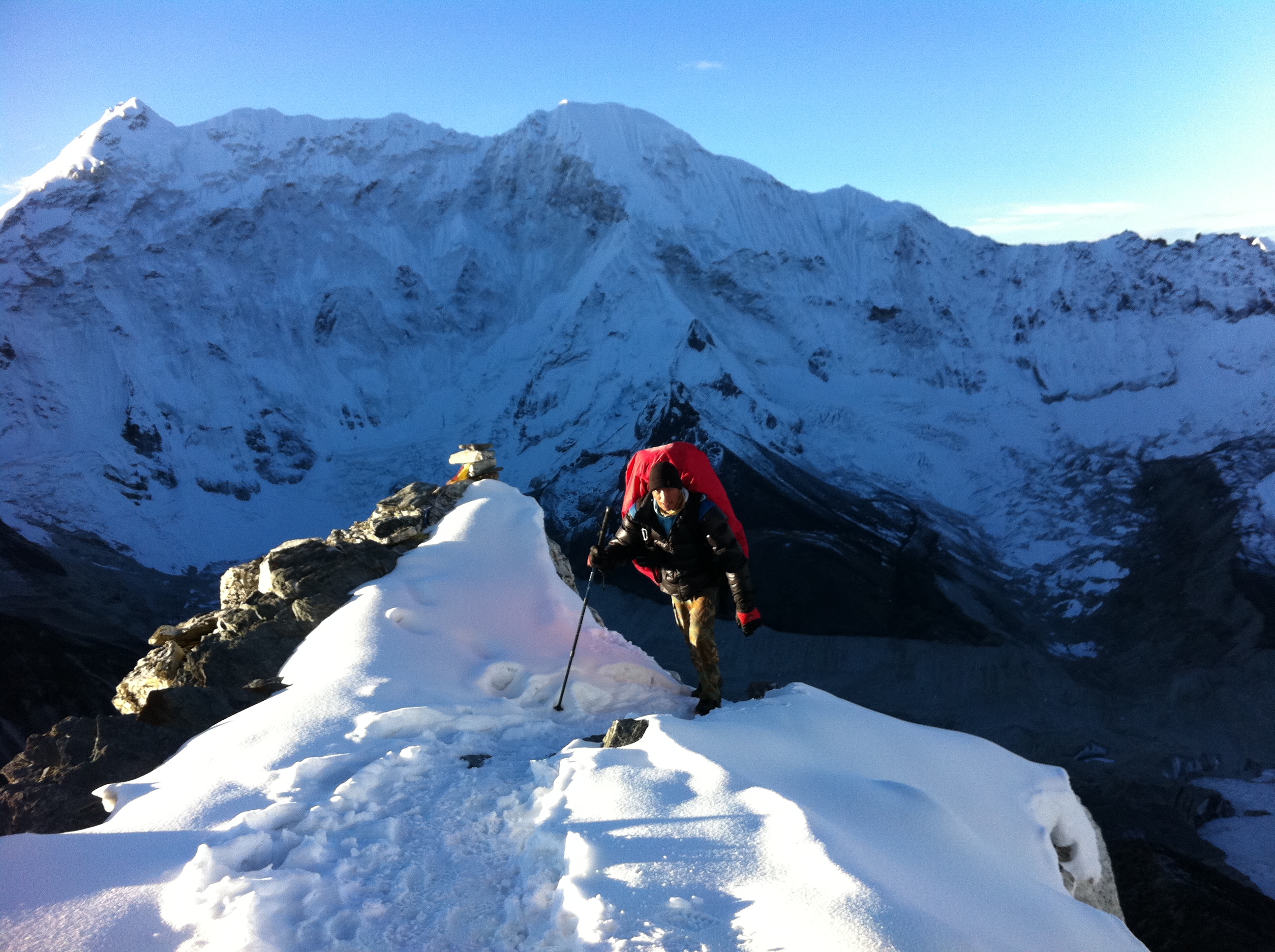
We do of course realise that in your own country you’ll have all sorts of rules and regulations for many things. Most likely you’ll also have enforcement in order to ensure that the rules and regulations are adhered to. Driving on roads is perhaps a prime example. In Nepal you could be forgiven for thinking that “anything goes” as far as driving on roads in Nepal goes and you wouldn’t be far wrong.
With regards to porters the Trekking Agencies Association of Nepal (TAAN) does indeed have rules and regulations that its members are supposed to follow. It should be as simple as that, “these are the rules etc”.
It isn’t. There is little in the way of monitoring, enforcement or punitive action and there is also no shortage of trekking operators in Nepal whom are neither licensed or TAAN recognised members.
In all aspects of how we operate treks for our clients and not just limited to porterage we are confident that we exceed whatever rules and regulations exist.
We are confident that your porters will demonstrate that not only do they take great pride in their work, but also that they are considered invaluable members of the trek team and rightly afforded the fairness, dignity and respect they deserve
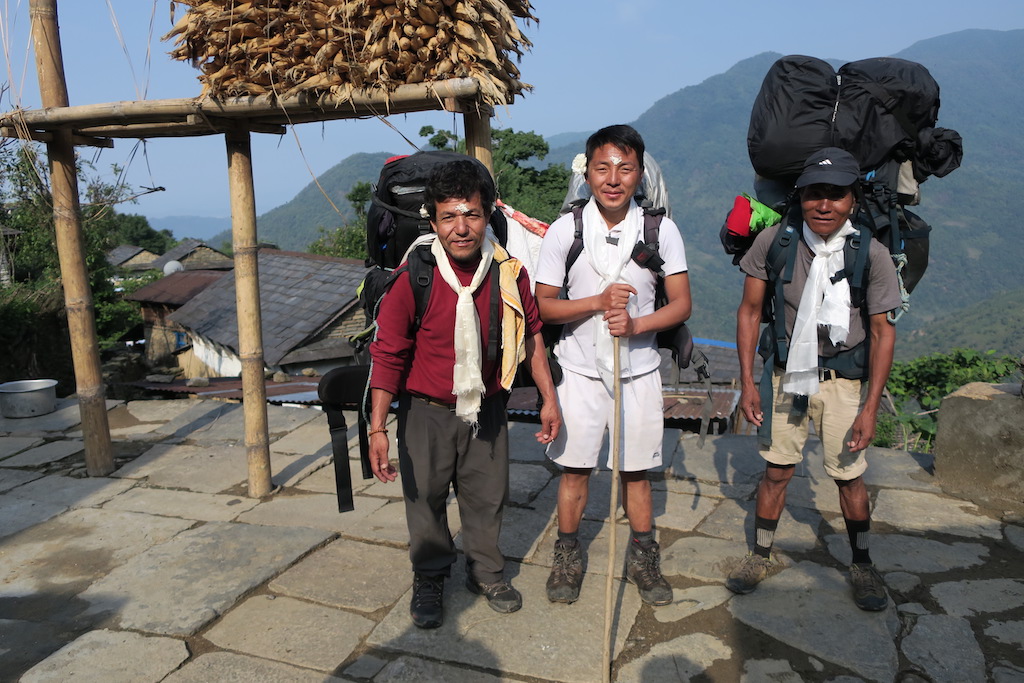
Main Baggage for porters to carry
There are limits as to what a porter should carry. So, your main baggage that the porter will carry must be 12kg (per person) as a maximum.
At your pre-trip briefing we’ll be giving you a complimentary kitbag to be used as your main baggage for your porter to carry on trek. The hold capacity of these bags being 60 litres.
Your porter will be using their own carrier to put the kitbags in and whilst a waterproof cover is used when it rains it’s a good idea to pack your items into kitbags in plastic bags to minimise the risk of them getting wet.
How it works on trek with porterage
Whilst there isn’t really a typical day on trek (each day is usually different) as a general guideline you’d hand your main baggage to your porters at breakfast time and thus often your porters will set off on the trail and head to your next overnight halt before you do.
But, as there is no such thing as a typical day, this may vary. Sometimes the guide may wish the porters to stay with your private party, or wait at certain locations that might be a little tricky underfoot, or sometimes head to the overnight lodge, deposit the baggage and then head back down the trail if assistance is needed.
One thing you can be certain of though is that even with their heavier loads your porter can usually walk much faster than you can and seem to have their own cadence to maintain momentum.
Safety on trek benefits with a Porter
A porter is of more value than just a mere bag carrier. They provide a safety back up.
We do sometimes get asked to operate a private trek without porters. Often this seems to be more about trying to keep the costs down or trying to prove something.
However the wisdom of heading into the high and often remote ramparts of the Himalayas is not without risk and it is entirely factual that on a trek sometimes things go wrong.
In the “middle of nowhere” something often considered as minor can become more detrimental.
Let’s look at something as minor as a sprained ankle. It’s hardly an emergency. But it becomes a an even more difficult situation to manage if there isn’t additional physical support that “strong as an ox” porters can provide.
If it’s just a guide and clients only and one person sustains a minor injury or is feeling unwell then without porter support things can easily end up being very tricky to manage safely.
All of a sudden there’s extra weight to carry (the injured or sick person being in no condition to do so) and the no small matter of the injured/sick person needing some physical support too. The Himalayas is no place to find yourself in a sticky situation like this and it also compromises the safety and welfare of our guide too.
Hence our policy is that we would not consider operating most Himalayan treks without the safety net that the deployment of porters can provide.
There is also the no small matter of….
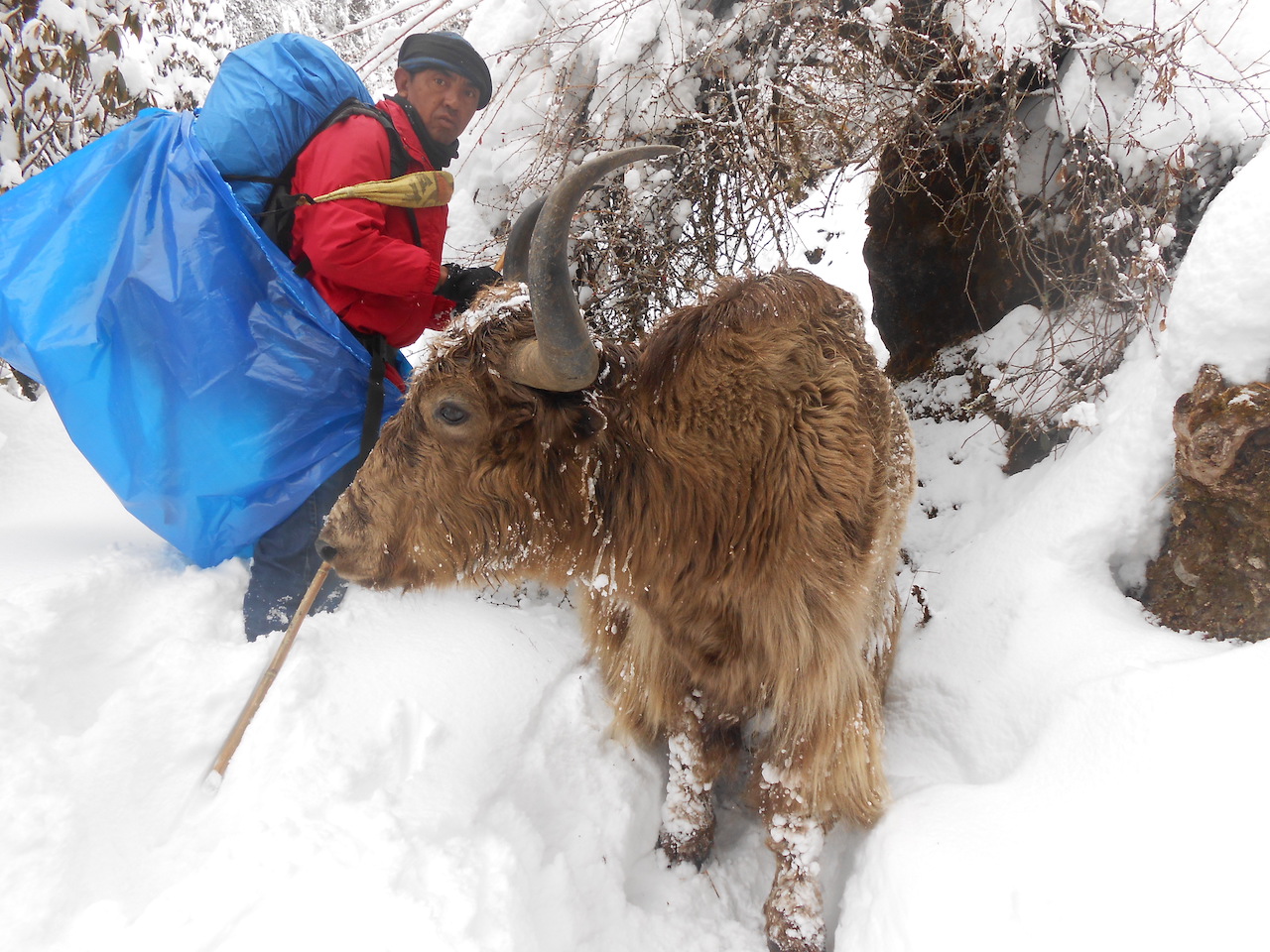
Acclimatisation benefits with porterage on trek
If you read our About Altitude advice or indeed any publication with regards to acclimatisation it’s abundantly clear that there is hard factual evidence that over exertion on a trek is detrimental to allowing your body to acclimatise naturally.
So, if you are carrying a heavy load and not the porter on a trek you are hindering the acclimatisation process and thus increasing the risk of developing altitude related difficulties.
Porters are used to carrying heavy loads at high altitudes…..it’s their job, it’s what they do. They are already adapted…..you’re not.
Thus not having porters on a trek entirely defeats the object of acclimatisation.
So, this is another reason why we wouldn’t consider operating most treks without porterage.
Porter wages
T.A.A.N. do indeed have a “recommended” amount that porters should be paid.
We pay porters more than that amount and you’ll find (if you ask them) that porters actually want to work for us on a trek because we pay them well.
Indeed you might just find that there is a bit of competitiveness between porters to work for us.
Don’t take our word for it. Ask your porter if we’re considered amongst the porter community as being one of the best and most fair and reasonable operators in Nepal.
Chances are they’ll tell you that not only do they want to be porters on your trek, they’ve worked for us many, many times.
So, yes, we pay our porters above the “going rate” and that is partly why we are very clear that when it comes to tipping porters it is not compulsory.
Incidentally we provide tipping guidelines for porters and other team members in your Final Joining Instructions.

Porters welfare on trek
We mentioned previously about the abominable way porters were treated. For example doing high altitude treks carrying inhumane loads and in just a pair of “flip flops” and some porters literally freezing to death.
That was then. This is now and in many ways nowadays being a porter is rather like being a one man (or woman as is sometimes the case) business as a porter.
So, as being a porter is a trade porters nowadays have their own “tools of their trade” just like many trades persons do in order to perform their business activities.
That said before embarking on trek your guide will ensure that your porter team are suitably equipped.
However, don’t forget these porters will be locals and as such already “mountain hard”. It’s where they live after all, so they won’t usually be attired the same as a tourist. What you may find as challenging is just entirely normal to a porter,
Porter subsistence on trek
Ever wondered what a porter does or whey they go after safely delivering your main baggage at the lodge as you probably won’t see your porters until the next morning?
Well, it depends.
Just like you, your porter also needs somewhere to eat and sleep on a trek. But, also just like you after a days work your porters also like to “hang out”.
It may be that they are working in their own region and so know everyone and go visit people they know, or even nip home to see the missus (or someone else’s missus:-), or congregate with other porters and locals for a bit of a gossip or a drink, or both!
In some main trek hubs e.g. Namche Bazaar there are official “porter shelters” where there’s accommodation and meals provided.
Some trekking lodges provide porter accommodation, whereas in smaller and more remote lodges the various porters may use the communal area at night and will usually provide meals for the porter too.
What your porter doesn’t do is get left out in the cold or go hungry.
As was once famously said, “an army marches on its stomach”, so this aspect of porter welfare is definitely taken care of.
Opportunity
Quite a few of our now seasoned Snow Cat Travel Guides actually started their working lives as porters.
So, as well as providing porters with fairly paid and reliable work as porters we also provide support to porters seeking to become guides. This includes, but is not limited to, on job training during the course of a trek with the guide taking a mentoring role, to porters progressing to being assistant guides as well as sponsoring them through the process of obtaining the required certification as well as additional practical educational training to become fully licensed guides.
Camaraderie on Trek
Our client feedback certainly indicates that they enjoy the camaraderie and social interactions they have with porters on trek. Even if your porter is far from fluent in English they’ll invariably have a friendly and helpful disposition and not least a keen sense of humour. Like all people they have their own story to tell.
Children always seem to have a lot of fun with their porters on trek.
So, do please spend time with your porters, they will very much appreciate knowing that their work is both recognised and valued.
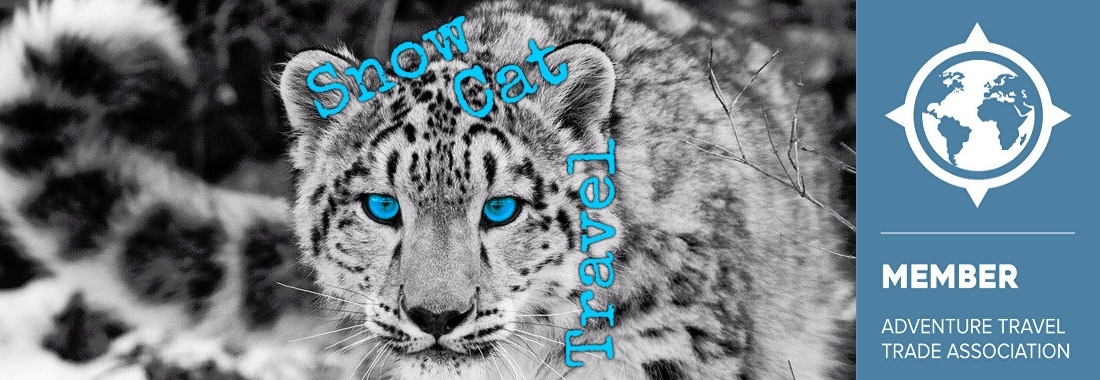

All rights reserved. Snow Cat Travel is a Registered Trade Mark UK 00003289264

